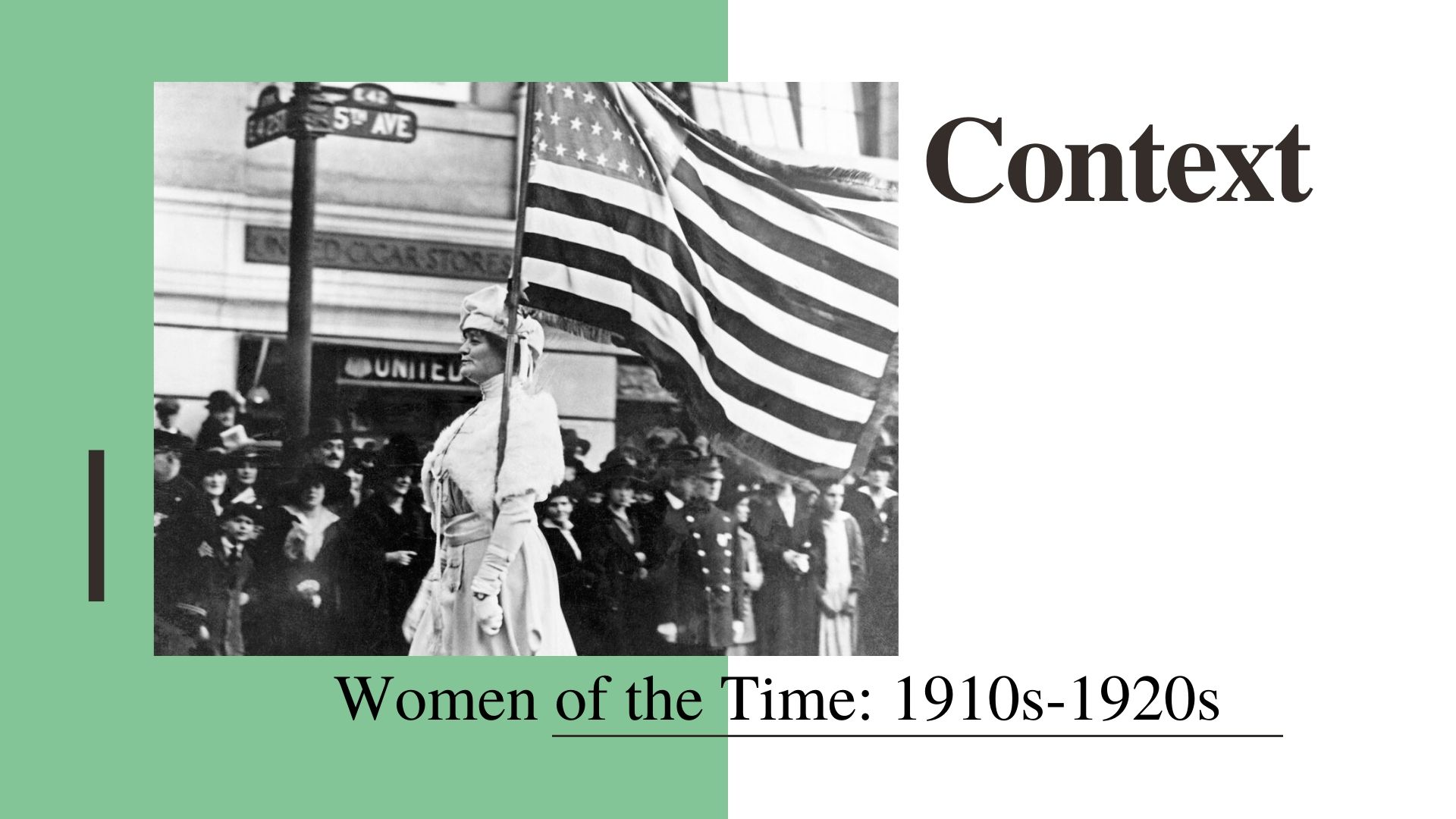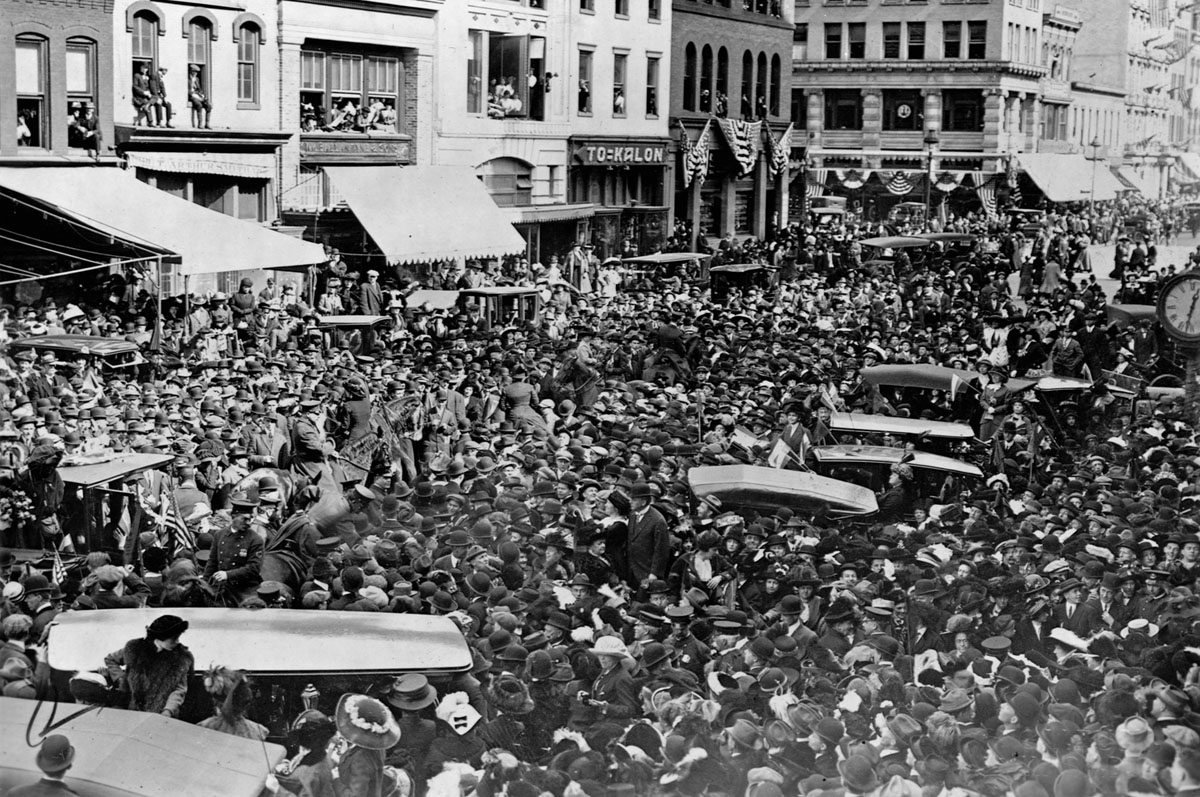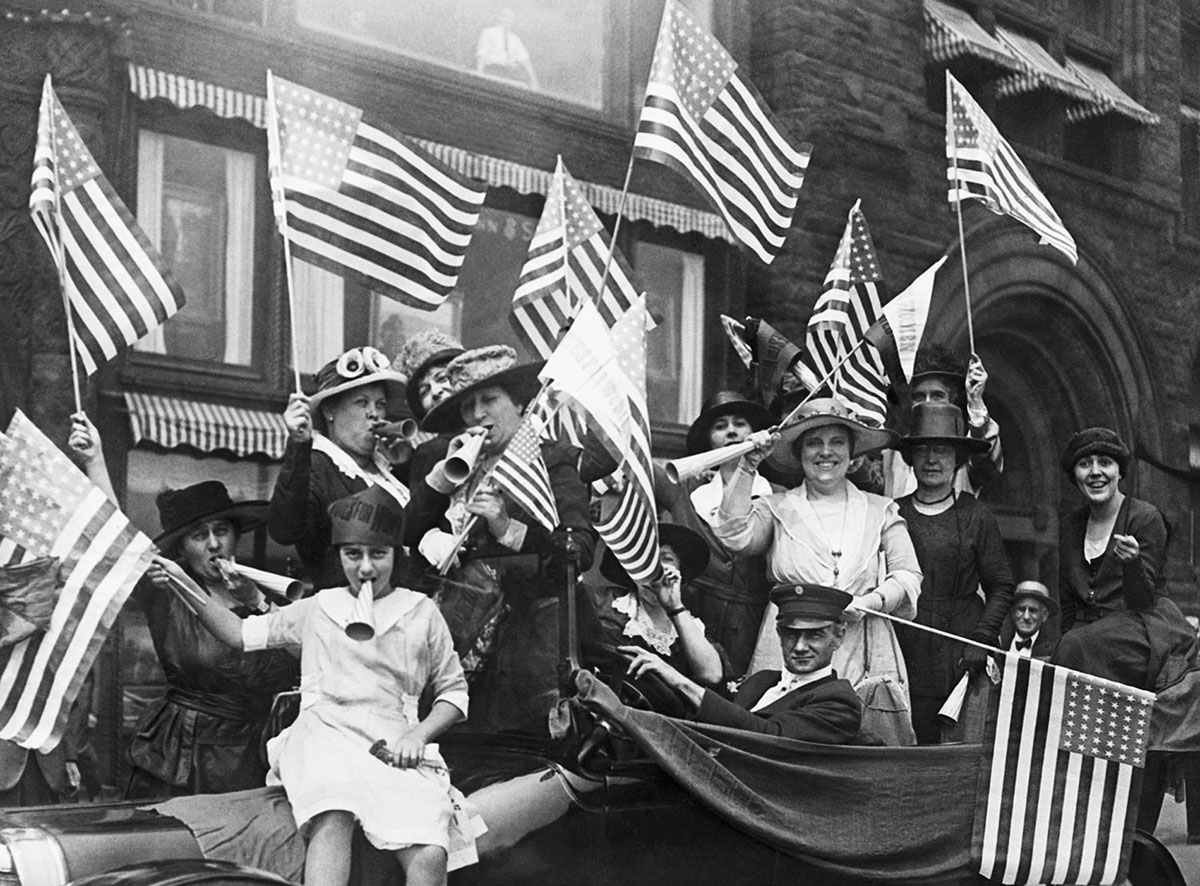Barrier>>

“Mrs. Herbert Carpenter, bearing an American flag, marches proudly at the head of a parade for women's suffrage on Fifth Avenue in New York City in 1914” - Image from The Atlantic
1910s-1920s: Woman's Suffrage Movement
While Margaret Sanger fought for women’s rights to birth control, women were also fighting for theirs. The Women’s Suffrage Movement was a movement started by groups and organizations of women to push for women’s rights. In the 1910s, they realized that they wouldn’t be taken seriously until they could vote. So women banded together to fight until they got their vote.

“Crowds fill a street in Washington, D.C., during the suffrage parade of 1913” from The Atlantic
“We women of America tell you that America is not a democracy. Twenty million women are denied the right to vote.”
~ Alice Paul (Historical Women's Rights Activist)
The Fight for Rights
The first women’s suffrage march was on March 3rd, 1913 in Washington D.C. Mobs of men physically assaulted women, leaving over 100 women injured. The mistreatment of the women protesting was sympathized by the public and newspapers, creating more pressure on the government.
19th Amendment Ratified
In 1920, after World War I, President Woodrow Wilson gave in to the movement’s demands of passing the Nineteenth Amendment that would allow women to vote. Although stereotypes and prejudice against women weren’t gone, this was a huge victory.

“Suffragettes hold a jubilee celebrating the passage of the Nineteenth Amendment.” - From The Atlantic